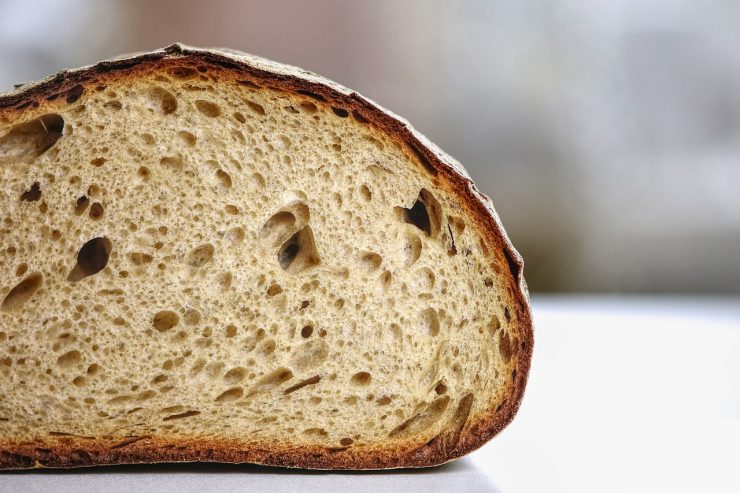“I Don’t Have a Problem with Gluten…” (Are You Sure About That?)
One of the most common things I hear when I bring up going gluten-free or grain-free is:
“Yeah, I would… but I don’t have a problem with gluten.”
And hey, that might be true for some people. But here’s the thing — more and more research is showing that even people who think gluten doesn’t affect them might actually be dealing with hidden side effects from eating it. They just don’t realize gluten’s the culprit.
It’s not that these symptoms are totally invisible (although some people with celiac can eat gluten and feel nothing right away). What usually happens is, we feel something — fatigue, bloating, brain fog, joint pain — but we chalk it up to stress, aging, hormones, or whatever else. Gluten doesn’t even cross our minds.
How Gluten Might Be Sneaking Up on You
Let’s break it down a bit.
There are three main ways our bodies can react to wheat:
-
Wheat allergy – typically causes things like rashes, hives, or even breathing issues.
-
Celiac disease – a full-on autoimmune response where your body attacks itself when gluten is around.
-
Non-celiac gluten sensitivity – the “gray area” where your body treats gluten like an unwanted intruder, but without the autoimmune antibodies you’d see in celiac.
Studies have shown that about 60% of people with wheat reactions had antibodies to gluten proteins like α-gliadin and β-gliadin — even if they weren’t officially diagnosed with anything. And in some cases, people experience an intense allergic reaction only when they eat wheat and then exercise afterward (a real condition called WDEIA – Wheat-Dependent Exercise-Induced Anaphylaxis. Yep, that’s a mouthful!).
Celiac is on the Rise – But So Is Sensitivity
Get this: Celiac disease is four times more common today than it was 50 years ago. That’s not just a coincidence. It’s likely due to how much we’ve tinkered with wheat through hybridization and modern farming. Today’s wheat looks nothing like what our grandparents used to eat. It’s more processed, more widespread, and found in everything from bread to sauces to salad dressings.
What’s more, wheat-based foods have become everywhere. Even in places like China, where rice used to reign supreme, wheat is now creeping into more meals — and gluten-related illnesses are rising right along with it.
And here’s the kicker: there’s no standardized safety testing for these “new” versions of wheat. So we’re all kind of being used as test subjects without knowing it.
You Might Be Reacting and Not Even Know It
In one 2007 study, researchers tested gut samples from both diagnosed celiac patients and from people who had zero symptoms. Surprisingly, 5 out of 6 people who felt totally fine still had an immune response when exposed to gluten.
Similar studies in the UK and Germany found that gluten sensitivity is likely three times more common than previously believed. That means up to 29% of people might be sensitive to gluten… and have no idea.
These immune responses aren’t minor. When gluten hits your system and your body doesn’t like it, it causes inflammation — a full-body “get this outta here” reaction. Over time, that inflammation can wear down your gut lining, cause nutrient absorption issues, and even lead to “leaky gut syndrome” — where particles of food sneak into your bloodstream and trigger more inflammation.
Even if you don’t have celiac disease, gluten could still be messing with your health.
It Doesn’t Stop With Gluten
Guess what else can happen? That same gut damage from gluten can affect your ability to digest other foods — like dairy.
Your body makes the enzyme lactase (needed to digest milk) in the small intestine. If your gut lining is inflamed or damaged, you may stop producing enough of it. That’s one reason why gluten sensitivity and dairy intolerance often go hand-in-hand.
And when doctors test for celiac disease, they’re usually looking for an antibody level of 30 or more. But here’s the weird part — if your test score is 29, you don’t technically have celiac. Even though you might still feel like you got hit by a truck after eating pasta.
Why Even Mild Symptoms Matter
You might be thinking, “Okay, sure, sometimes I feel bloated or tired, but it’s not a big deal.” But here’s the truth: those little symptoms add up. Chronic, low-grade inflammation can quietly do serious damage over time.
It can kill off the nutrient-absorbing cells in your intestines. That means you could be eating plenty of food and still be undernourished — yep, even if you’re gaining weight.
And chronic inflammation? It’s been linked to bigger issues like autoimmune disease, heart disease, and even cancer. So yeah… that bloating isn’t just annoying. It’s your body waving a red flag.
One More Thing…
Oh, and just in case you thought gluten was the only bad guy in your bread — think again.
Mike’s Note:
There’s a little-known compound in most traditional bread that might actually be more dangerous than gluten. It’s been shown to harm your heart, brain, nerves, and immune system — and even make it harder to lose weight.
But here’s the good news: there is a way to enjoy bread without paying the price.
My friend Kelley Herring spent 10 years developing a totally different kind of bread — one that actually supports your health and helps your body burn more fat than even some veggies. No blood sugar spike, no inflammation, and yes… still delicious.
Want to try it for yourself? [Learn more here].
Here’s to enjoying bread again and feeling your best. Win-win.











